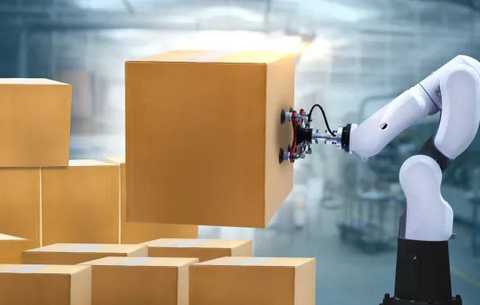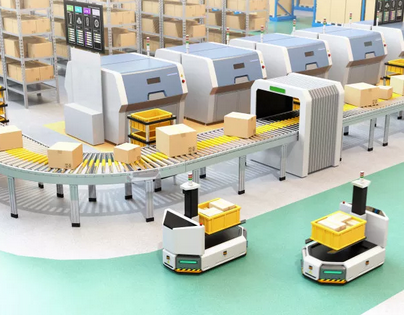

Logistics technology is a particularly easy-to-use technology application. Intelligent logistics involves a wide range of application technologies such as modern information technology, electronic information technology, key equipment technology, and practical operation technology. In many engineering designs, the application of automatic retrieval technology, that is, the application of logistics detail collection technology, is one of the indispensable application technologies in logistics, and is widely regarded as the main guarantee for intelligent logistics.
In the process control of goods circulation, information needs to be standardized and open, such as goods number, goods code, volume, weight, etc., so that the handover of goods between different companies saves various repetitive information input and input manual labor, which helps to improve Labor productivity of the entire logistics industry.
Marking is to mark items running in the supply chain, form links, connect information at various stages of the product life cycle, and track the entire process of a product from production to sales. It is a necessary prerequisite for the modernization of logistics management, provides technical means for realizing the synchronization of logistics and information flow, and effectively improves the efficiency of supply chain management.

It is necessary to provide a complete code identification system for items in logistics, and to provide a common language symbol for each link of supply chain management. This is an important step in realizing logistics information collection database and code, and it is also the most basic way to establish the entire supply chain. Condition is the first step to realize warehousing logistics automation.
The three forms of cargo identification or coded FID with barcode, QR code and R are an evolution from simple to complex. At present, barcode mode has been widely used in the entire supply chain, while QR code and RFID are becoming more and more popular.
RFID tags, commonly known as electronic tags, can penetrate communication, read without barriers, and are not covered by any objects. Large data memory capacity, strong resistance to water, oil, chemical products and other substances.
RFID tags store data in a chip, which effectively avoids damage and data loss. The function of repeatedly adding, modifying and deleting RFID stored data is convenient for information replacement and update. Reusable, not limited by shape or size, data content is password-protected for strong security.
Efficient and accurate identification has always been a hot and difficult point of research in the field of logistics automation. Automatic identification technology is a highly automated data acquisition technology based on the development of computer, light, machine, electricity, communication and other technologies. By applying some identification devices, the relevant information of the identified object is automatically obtained and provided to the background processing system to complete the relevant subsequent processing.

The barcode recognition error rate is only one in 100,000, the first reading rate can reach 98%, the input speed is fast, the adaptability is strong, the application field is wide, and the promotion is convenient. It is by far the most economical and practical automatic identification technology. Two-dimensional code identification technology uses two-dimensional code identifiers and computer network equipment to track, identify, authenticate, control and feedback the entire logistics process, and realize the whole process of information tracking and processing of cargo extraction, transportation and transmission.
The application of collection technology helps logistics to move towards the era of intelligent logistics. The concept of "intelligent logistics" automation is put into practical application. Automatic collection technology can demonstrate skills in logistics links such as warehousing, transportation, packaging, and distribution, and help Chinese logistics enterprises to achieve informatization and Intelligent
Technologies such as sensors, Internet of Things, artificial intelligence (AI) and 5G to reduce costs and transform operations are the general trend, and logistics information collection is no exception.
Under the 5G trend, RFID uses barcode technology on the Internet of Things to optimize the logistics distribution system and promote the intelligence of logistics management and services. In a sense, the application of logistics collection technology is related to the success or failure of logistics intelligence. The communication technology consists of 4 people. The G-to-5G spectrum utilization is greatly improved, and the data identification and collection technology will also be greatly improved. 5G technology has the advantages of high data transmission speed, strong network pan-capability, high transmission security performance, low power consumption and transmission delay, and large number of terminal accesses.
The massive access to 5G networks represents the implementation possibilities for IoT to connect physical devices. The logistics industry can fully realize the IoT smart logistics warehousing industry chain, which means that each terminal node in the smart logistics warehousing system can be monitored in real time through the IoT, making data identification and collection more and more important.
The intelligent logistics warehousing management system under the Internet of Things can automatically and accurately obtain warehousing information and product information. For example, the RFID system in the warehouse is well integrated with the pallet system, and can be applied to the entire warehousing system in a closed loop, effectively reducing costs.
We're more than just an IoT solutions provider—CDEBYTE is your partner in making sustainable and efficient technology towards a more connected future. It's IoT make everyting easy.







